Recently, I had the chance to see the film “The Menu.” The movie is a flinchless critique of the grand cru of the restaurant industry and of the clients whose privilege allows them to experience such wonders, all wrapped up with gruesome horror. To be frank, I did not really care for it.
Now, I get it. The Menu aims to push back on a form of erudite fine dining that has clearly jumped the shark, hitting a wall against an excess of privilege and narcissism, the intense pressure on the teams, and the treatment of the kitchen workers, many of who are paid poorly or not at all.
While I appreciate the thesis, the film didn’t nail the landing. It was a whole lot of gratuitous gore and brutal violence without much payoff; the film wasn’t as smart or clever as it thought it was. There was no subtlety. It was too hit you over the head (or burn you over the head). Movies like Nope, Sorry to Bother You, or Get Out are able to really bring the satire home with so much more nuance, brilliance, and impact.
A lot has recently been written about the movie already, especially since René Redzepi announced that he would close Noma, the most obvious reference point for The Menu. Look, René is not closing his restaurant because of The Menu, but a conversation about the connection is sort of inevitable. Just as a discussion of the film is hard to avoid; it is provocative if nothing else. So let’s discuss a bit, shall we?
SPOILERS BELOW THIS POINT
In the movie, directed by Mark Mylod from a script by Seth Reiss and Will Tracy, a dozen or so diners shell out more than $1,000 per person to board an exclusive boat to a tiny isolated island and experience dinner at the lauded Hawthorn. The acclaimed chef, Julian Slowik, the perfectly cast Ralph Fiennes, promises them the meal of their lives (and also the last meal of their lives!)
The guests are hand-selected by Voldermort, errr Slowik, himself; yet we learn very little about each diner. Just enough crumbs of each character are scattered in the dialogue so that we understand that they all live on their own podium of elite privilege. (All other than the sex worker, Margot, who is an unexpected guest, a last minute date switch.)
There’s an insufferable, overly-funded pompous foodie (Nicholas Hoult), a clutch of cocky millionaire bros (among them Rob Yang), a washed up actor (John Leguizamo), an acclaimed food writer who originally put Slowik on the map (Janet McTeer), and an older, super-monied white couple (Judith Light and Reed Birney); the husband has been unfaithful to his wife with that sex worker (Anya Taylor-Joy) who happens to be the (unexpected) date of the insufferable foodie. Are you with me so far?
These 12 or so souls are under the care of the Maitre D’, Elsa, possibly my favorite character (played by Hong Chau) who guides them through the ultimate experiential dinner party. It all ends, naturally, in their collective mass execution-suicide by S’mores. Well, all except the sex worker who is allowed to escape with a magnificent medium-rare cheeseburger prepared by Slowik; the only meal he cooks where he seems to experience any sort of joy. Such a subtle message! All we really need is the comfort of a good cheeseburger!
The movie is an impressive doppelganger for fine dining. That’s because Dominique Crenn served as culinary consultant, working with the team to create the intricate courses—lemon caviar tops a raw oyster with mignonette, an arrangement of pressed and pickled cucumber balls arrive with charred lace and milk snow; there’s an admittedly hilarious breadless bread course with a set of lonely infusions, emulsions, and foams, and a Noma-inspired dish called The Island, an elaborate diorama of rocks, foliage, lichen, and mosses, topped with one glistening scallop.
The satire gets pureed with a hearty dose of horror in other courses, like the one entitled “Man’s Folly,” which Catherine, Julian’s sous chef, has created. Before it is served, she tells the story of how Julian has relentlessly harassed her, trying to have sex with her when she first started to work with him. When she denied his advances, she wasn’t fired, but she was shunned. Julian refused to look her in the eye or engage with her. For her course, she stabs him in the leg (quite close to his privates), and wipes the blood all over his chef jacket. See what I mean about lack of nuance?
When Julian talks about memory before serving his course, he recalls his family’s Taco Tuesday nights, a story he shares while leaning over a table in the corner of the dining room where his drunk mother sits sadly withering over a bottle of wine. “One day my father came home drunk and beat my mother, so I took a pair of scissors and stabbed him in the thigh!” he says. “Enjoy your Chicken Tacos with Scissors in It!”
The most difficult and shocking scene (you might want to skip this paragraph) is called “The Mess,” in which a young line cook named Jeremy, who clearly has had his self esteem smashed to bits while working under Slowik, admits to his scowling persecutor that he will never be as talented or gifted as his mentor. Tears well up in Jeremy’s eyes. Then he stands in the center of the restaurant, on a tarp laid out with forest foliage by his fellow colleagues in the brigade, and swiftly places a loaded gun into the back of his throat and blows his brains out. I screamed. Diners gasped. But they continued eating the course dearly departed Jeremy created, an ode to bone marrow. Yeah.
Now just because I didn’t like this film doesn’t mean I could stop thinking about it, which makes it worthwhile for sure. Indeed, I could not shake it; I was still turning it around in my mind the other night while having dinner at the newly opened Five Acres.
The restaurant is one of a slew of glamorous new restaurants in the Rock Center collection, and it is the latest from Greg Baxtrom of Olmstead. Greg has worked in some of the world's most exciting kitchens, including Alinea, Blue Hill at Stone Barns, Per Se, and Lysverket in Norway, all of which are to a certain extent satirized in The Menu.
But Greg is not a psychotic chef burned out on the service industry prowling around the kitchen planning serial murders while serving snow made from the eggs of small lemurs. Nope, that is not Greg.
And his menu, which he created with Culinary Director Sherry Cardoso (previously of Per Se and Brooklyn Fare) does not resemble the progression of dishes served at Hawthorn. Many of the courses were playful and whimsical, some of them cerebral, all were terrific. None involved homicide or dismemberment. Woo hoo!
Now about that menu. For us, it began with Smoked Oysters Vanderbilt, which arrived on a bed of seaweed; maybe it’s hand harvested under a full moon, I have no idea. The oysters are dabbed with bacon jam and served under a clear glass cloche. When the runner lifts it up, swirls of smoke rise up like a cloud of dense fog coming off the water. It’s a bit of a performance, yes, and I loved it. And those oysters are stunning: plump and briny, cool not cooked, and the smoke and fat of bacon makes for an inspired surf and turf.
Next we had the “vase” made from roasted Delicata squash. Sure we can poke fun at a squash made into a vase; we can poke fun of everything if we want to, but it’s one fucking delicious squash vase. The roasted receptacle (also our most modestly priced receptacle), is filled with whipped ricotta, prosciutto chips, market greens, and apples. Split it open down the middle and scoop out the warm ricotta with a prosciutto chip; slice a piece of the “vase” and eat it with some apple, or have a perfect bite with a little bit of all. I’d like this vase on my Thanksgiving table next year.
One of my favorite dishes of the night was the Beef Tartare, a fairly classic tartare of finely diced ruby red beef, shallots, mustard and capers, and a good amount of salt and pepper, but it’s tucked into soft scrambled eggs and topped with a crispy crown of shredded potatoes, a basket of crunch that will by all means be devoured. Greg should serve this at breakfast with hot sauce.
There was a particularly delicious grilled guinea hen, though it didn’t seem grilled as much as poached sous vide, and pressed into a rectangle. This happy hen seemed to have been basted in a warm bath of butter and herbs for days upon days, weeks even. It was accompanied by a rustic wedge of a deeply flavorful vegetable tart made from salsify and hazelnut, with a juniper jus. Yes, juniper! And no one was murdered or flambeed!
His “Lamb Gyro” is a dish you’ll want to come back for again and again; the lamb is slow roasted so it can almost be eaten with a spoon, and it’s just bossy with chiles and herbs, served on a pair of fluffy warm potato pitas, with a flurry of high heat pickled bird beak peppers. It’s served with a little cup of lamb chili for extra fun; pour it over the top, or do a dip. Your choice, there is no wrong approach here. It will be gone in no time either way.
Five Acres also serves breakfast and lunch, and while I haven’t been for those meals the Instagram photos of the pastry case and breads served during the day call to me from my Brooklyn apartment like a Siren. Also, his burger, available at lunch and at the bar at dinner, is a gorgeous one: a double decker on brioche bun topped with Reading Raclette cheese, a veal jus soaked brioche slice at the center, finished with pickled onions. It’s served with hand cut fries and a foie gras hollandaise, so it guilds the lily, but there’s nothing wrong with that in my book. There’s a place for everything. And if you’re looking for a simple double cheeseburger there are many places to get a great one.
And I suppose that’s the slippery slope, right? We enjoy creativity, and we should not punish it, but, yes anything can lean over too far, and the adoration, obsession, and sickening pretense, entitlement that can come from diners can easily make many in front and back of the house feel ready to burn it all down. And I suppose that’s the place where we find The Menu. It exists in the extreme and to question the extreme. I appreciate that. I just wish it did it with a little more finesse and nuance.
Now back to Five Acres. I did have one critique of the restaurant, if you can even call it that. It has to do with its concourse location, a windowless thoroughfare on the Rink Level of Rock Center. The “room” is very comfortable, with highly styled mid-century tables and chairs, gorgeous ceramics and flatware (as usual), and beautiful layers of lush greenery hung here and there like drapery. But the designers, the esteemed INC Architecture & Design (other projects include Momofuku Noodle Bar Uptown, IRIS and Portale, among others) are fighting a losing battle here.
The “open-air” concept feels like a First Class airport lounge; I was half expecting to hear my gate called, a delay announced, or a flight attendant asking Ms. Strong to please see the gate agent. While its neighbor, the restaurant Jupiter, has created a sense of a “restaurant” by erecting walls and doors, and the other Rock Center eateries are “real” restaurants with street side locations, Five Acres is none of these things. And that hurts any attempt at true atmosphere. It is not enclosed with doors, a ceiling, or really in any way; it’s almost like a culinary playpen in an open concourse.
That means that the restaurant’s lighting is really just the lighting of the concourse, which is not very flattering. There’s no music or soundtrack here either, so the mood, the vibe, is really, well, kind of lacking. That said, the restaurant is extremely comfortable, and the lighting is good, so you will not need to take out your phone to read the menu. The sound level is peaceful, so conversations can be had with ease. The service is also excellent and, well, as I’ve said, so is the food.
Oh wait, I forgot to mention desserts from Pastry Chef Alessandra Altieri. I had my favorite — the whipped lavender honey-topped Olmstead Frozen Yogurt. I didn’t care that it was winter and folks were ice skating just a few feet away from us. When given the opportunity to sink a spoon into this tart fro yo, cold swirls of it buried under a cloud of honeyed lavender cream, I will never turn it down. You should not either.
If you do want a “real” dessert, though, by all means. There’s a pumpkin cake with poached seckle pear, pear sorbet, and burnt honey, that Steven loved. Alessandra also has her version of S'mores, described as “toasted marshmallow, chocolate cream, cinnamon grahams, brown butter crumble.” Interestingly, nothing about a bonfire of souls.

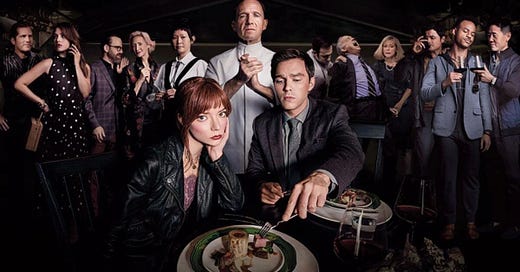



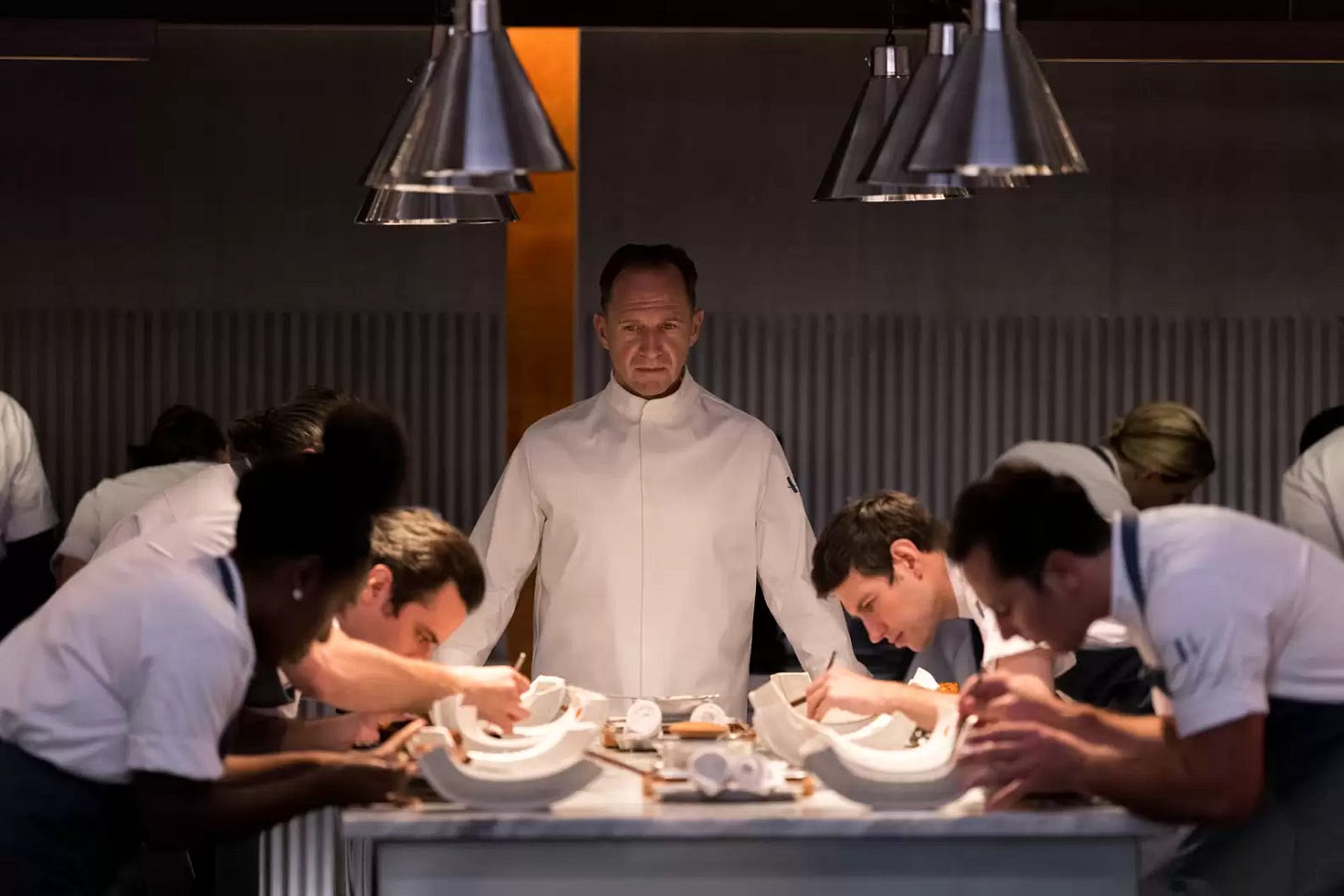
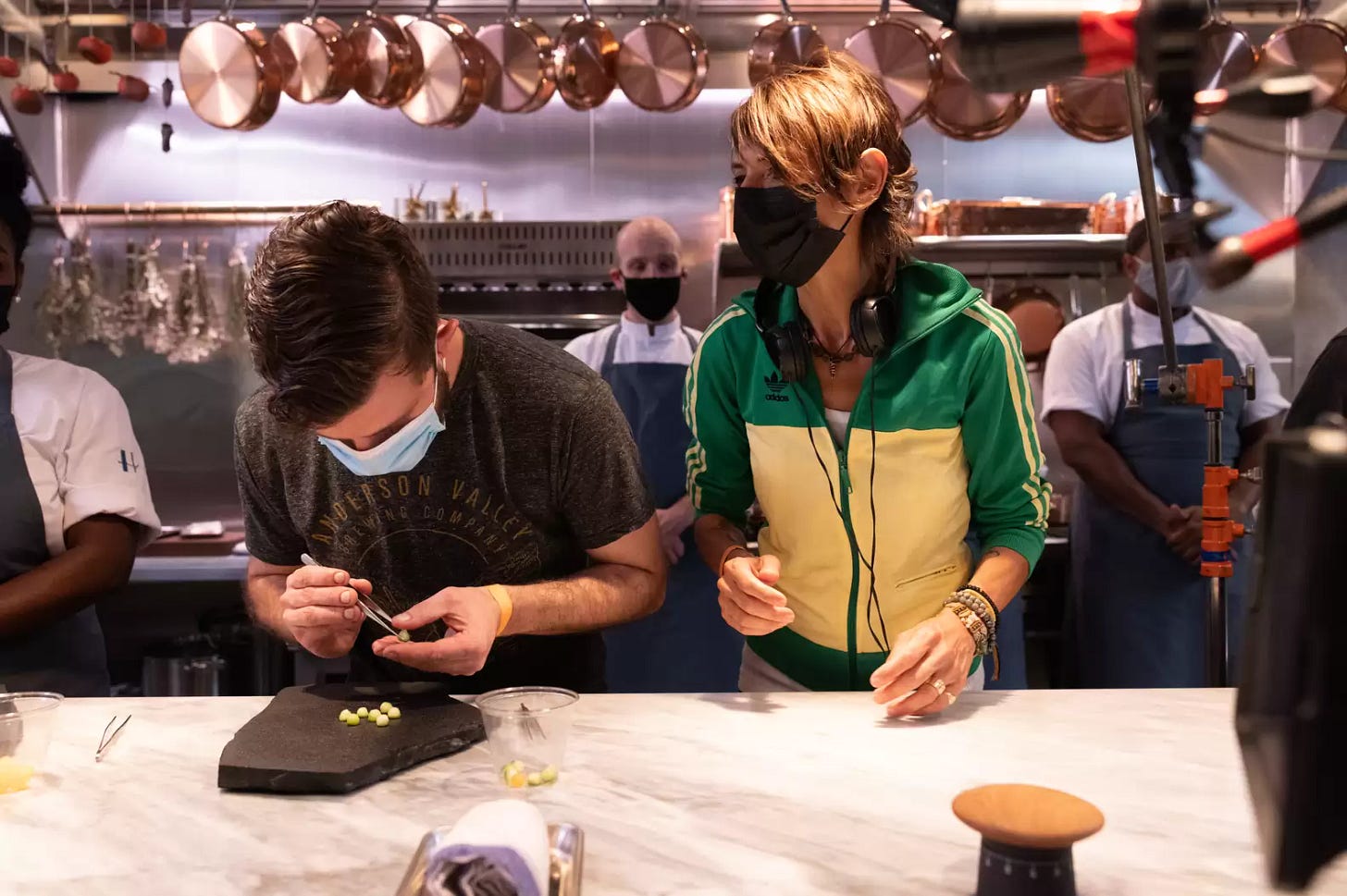
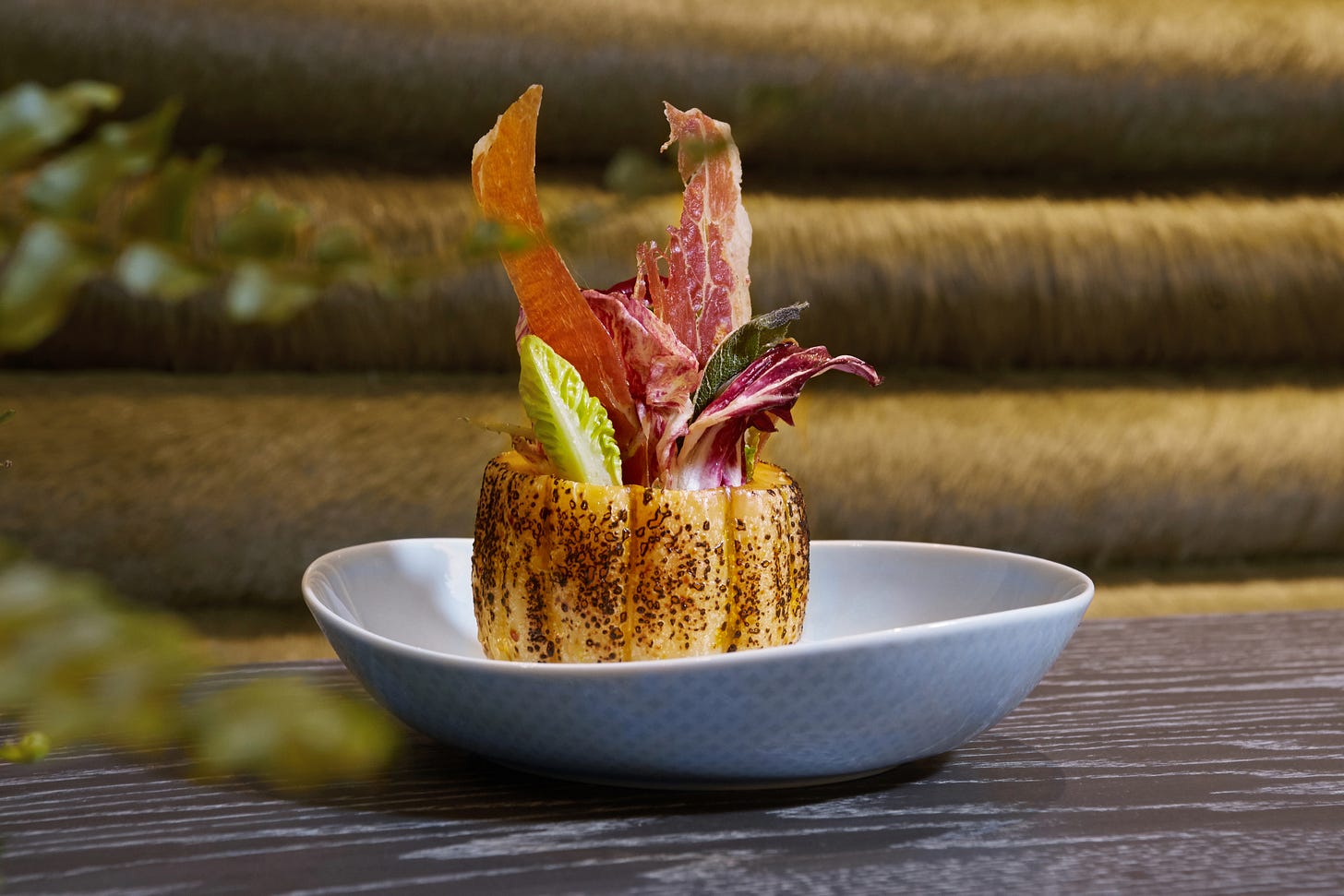
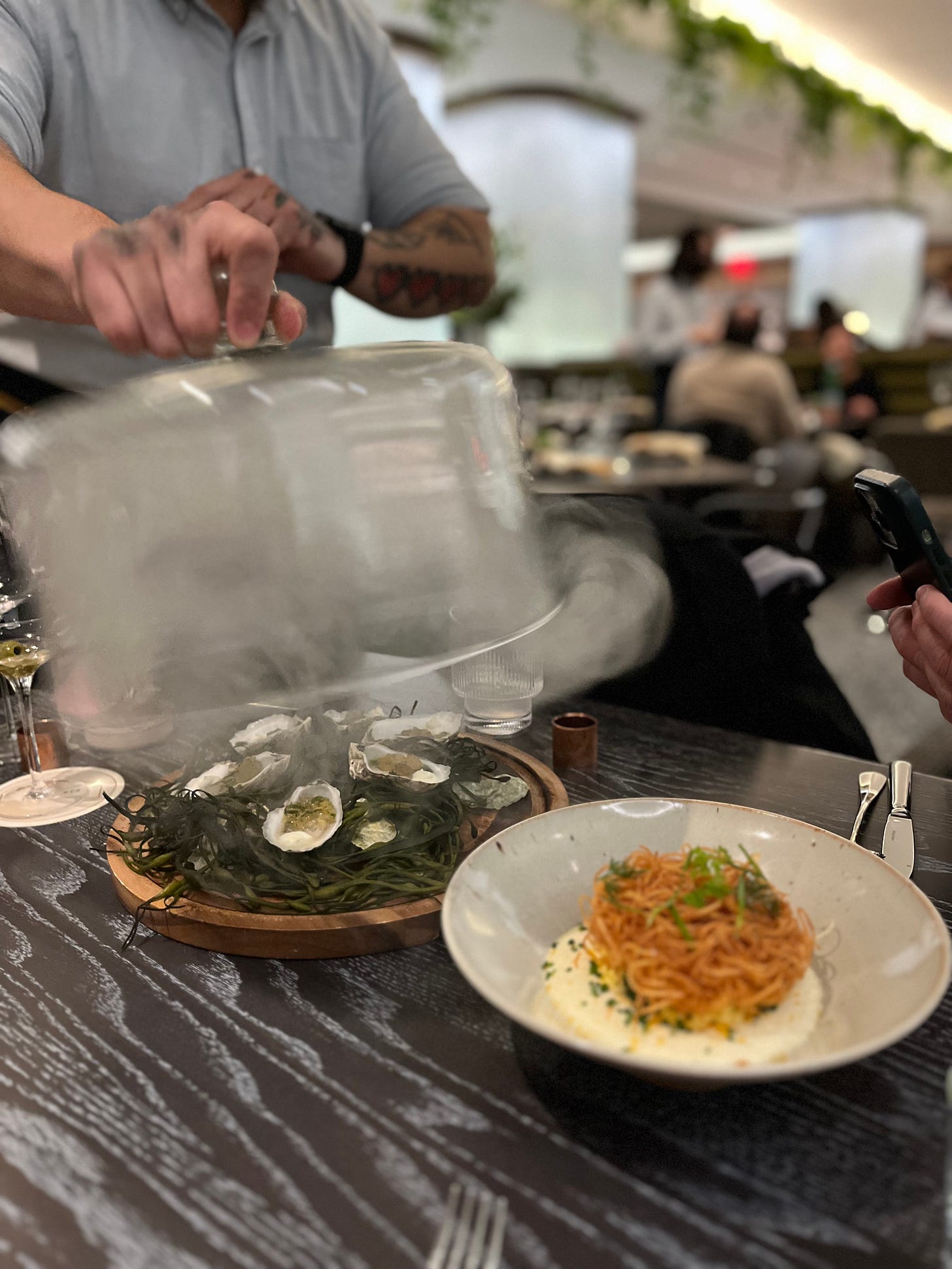
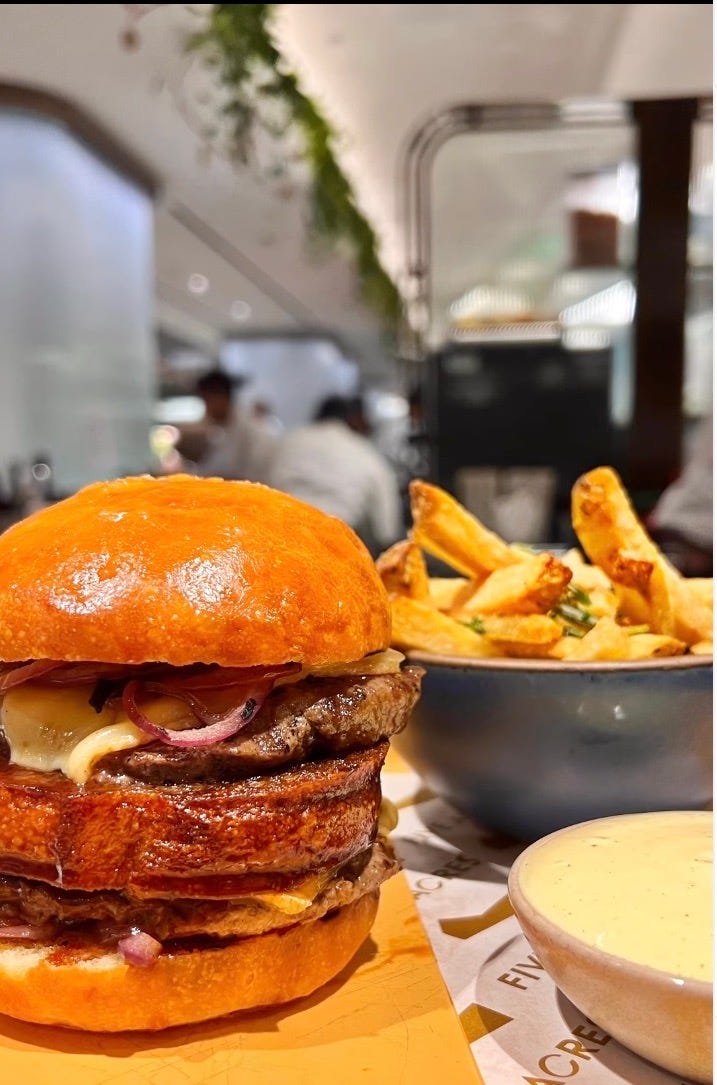

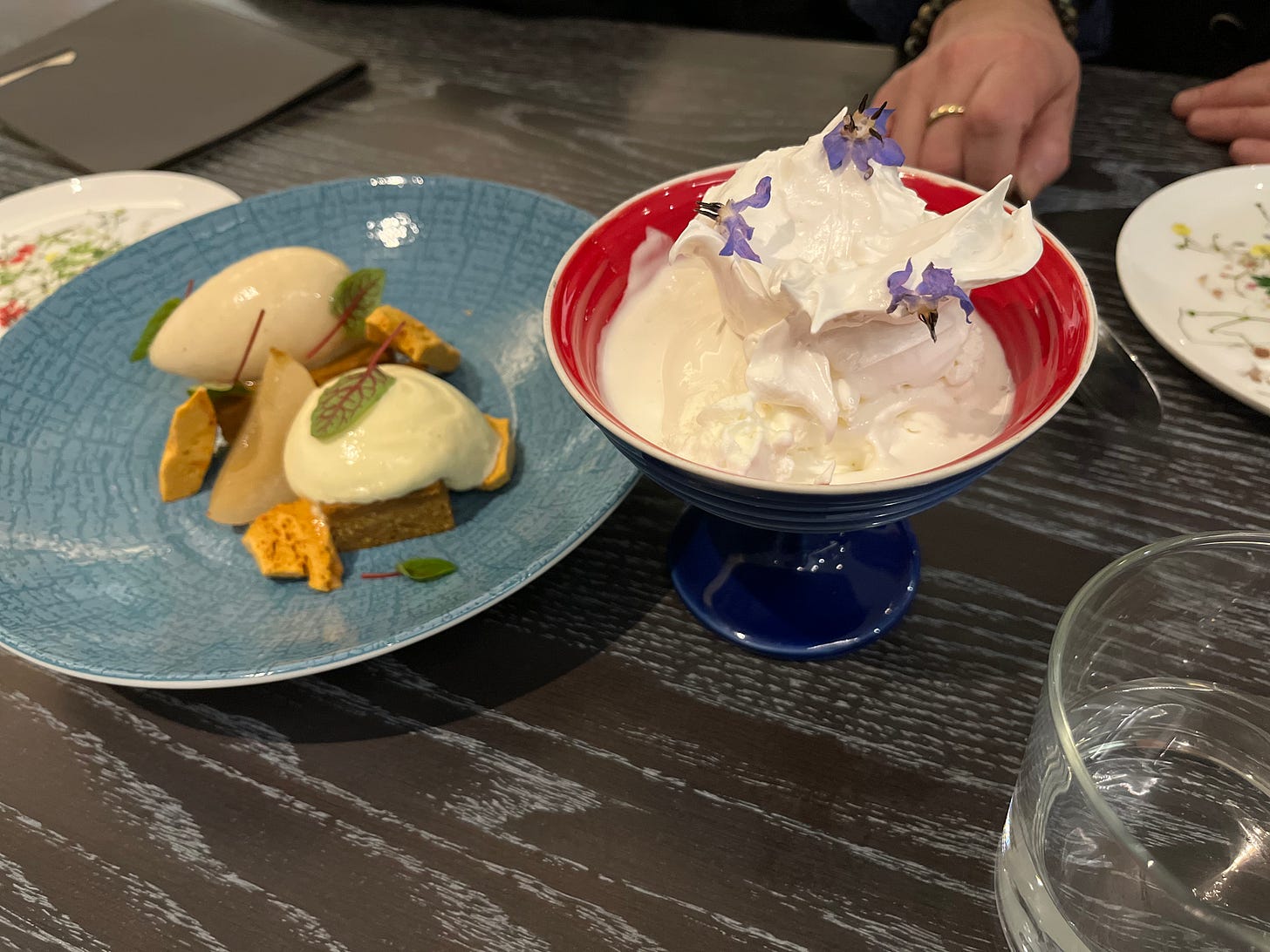
This review tells us three things about Andrea Strong: (1) she works hard to get the facts right; (2) she doesn't mince words; and (3) she cares about the world of food and the people who make it so rewarding.